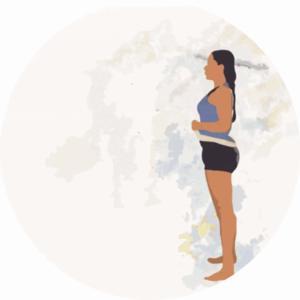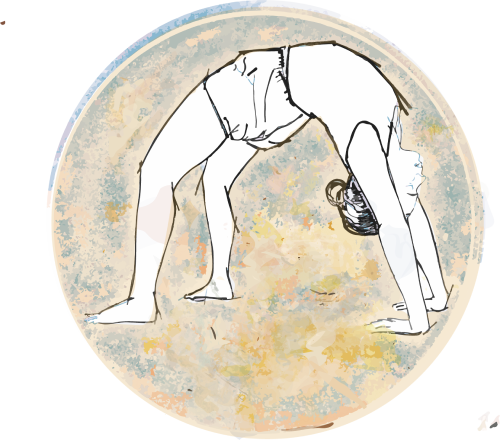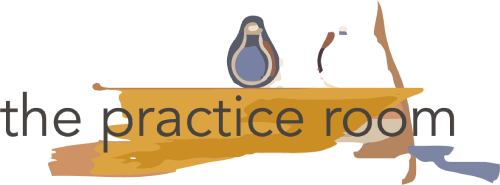[vc_row][vc_column][vc_column_text text_larger=”no”]
aka on antibiotics with inflammed jaw
This is not a ‘sequence’. It is only an example for how asana practice can be modified to adapt to specific life situations. A couple of weeks ago, I went through a moderately complicated tooth extraction procedure to remove an infected tooth (result of misaligned teeth + decades of snacking between meals). While in most other practices, complete rest is advised in any state of physical trauma or discomfort, in our tradition, many times it gives us an opportunity to experiment and adapt, and often there are positions and actions that can alleviate the present condition and make recovery faster ( to be sure, complete rest IS recommended in some conditions. e.g. if running a temperature.
Why the asana practice had to be adapted:
I was put on strong antibiotics for a week. Antibiotics kill intestinal flora indiscriminately – the good along with the bad. This imbalance in the gut flora manifests in various ways – bloating, indigestion, acidity, constipation, nausea etc. Antacids and probiotics are often prescribed along with antibiotics. I avoided the antacids, but added extra probiotics and raw food to the diet. By the second day, my abdomen started reacting to the mass destruction inside. this might not be a helpful description, but it felt as if the breath was not reaching the abdomen through the mushroom cloud of the antibiotic explosion. The abdomen needed to be extended/ expanded, and to be infused with breath.
My mouth was inflammed and in pain. And taking the head down incressed pressure on the outh parts, and increased the pain.
In addition, there was the generalised physical and mental discomfort of the procedure resulting in lassitude and generalised weakness.
I continued to record classes and to talk, and this probably interfered with the recovery process.
What i could NOT do as a result of the above:
- any action that contracted/ churned/ pressed the abdomen – abdominal actions, twists, forward extensions, prone backward extensions
- any action that took the head downwards – forward extensions, even those standing asanas where the head is taken down or even turned to the inflammed side, most backward extensions where the head hangs back, and inversions
- Due to general fatigue, any standing asanas
The recovery sequence
The first line of defense – done within a few hours of the procedure. Helped so much more than lying on bed. These three positions freed up the abdomen, and the breath, and brought mental and emotional quietness. The extension of the legs, groins and hips, improved circulation in these areas (i had spent the previous hours lying curled up in bed)
(The prop arrangements in the images are indicative – some prop supports are only for my pre-existing conditions)[/vc_column_text][vc_row_inner][vc_column_inner width=”7/12″][vc_single_image image=”3389″ img_size=”full” parallax_scroll=”no”][/vc_column_inner][vc_column_inner width=”5/12″][vc_column_text text_larger=”no”]
Upavistakonasana – arms extended back
[/vc_column_text][/vc_column_inner][/vc_row_inner][vc_separator][vc_row_inner][vc_column_inner width=”7/12″][vc_single_image image=”3392″ img_size=”full” parallax_scroll=”no”][/vc_column_inner][vc_column_inner width=”5/12″][vc_column_text text_larger=”no”]
Upavistakonasana – arms released down
[/vc_column_text][/vc_column_inner][/vc_row_inner][vc_separator][vc_row_inner][vc_column_inner width=”7/12″][vc_single_image image=”3393″ img_size=”full” parallax_scroll=”no”][/vc_column_inner][vc_column_inner width=”5/12″][vc_column_text text_larger=”no”]
Baddhakonasana – arms extended back
[/vc_column_text][/vc_column_inner][/vc_row_inner][vc_separator][vc_row_inner][vc_column_inner width=”7/12″][vc_single_image image=”3394″ img_size=”full” parallax_scroll=”no”][/vc_column_inner][vc_column_inner width=”5/12″][vc_column_text text_larger=”no”]
Baddhakonasana – arms by the side
[/vc_column_text][/vc_column_inner][/vc_row_inner][vc_separator][vc_row_inner][vc_column_inner width=”7/12″][vc_single_image image=”3395″ img_size=”full” parallax_scroll=”no”][/vc_column_inner][vc_column_inner width=”5/12″][vc_column_text text_larger=”no”]
Purvottanasana – arms extended back
[/vc_column_text][/vc_column_inner][/vc_row_inner][vc_separator][vc_row_inner][vc_column_inner width=”7/12″][vc_single_image image=”3397″ img_size=”full” parallax_scroll=”no”][/vc_column_inner][vc_column_inner width=”5/12″][vc_column_text text_larger=”no”]
Purvottanasana – arms by the side
[/vc_column_text][/vc_column_inner][/vc_row_inner][vc_separator][vc_column_text text_larger=”no”]
Over the next 3 days, the inflammation started to reduce, i was able to add some supported inversions. Supported inversions are a gift in any life condition, and its worth the effort to find an adaptation that can work with our limitations. I also started adding back supported standing asanas ( one is indicated in the video) , and upright twists.
The role of the breath:
As the cumulative effect of the antibiotics became more severe, the intensity of the breath work had to be increased to penetrate the abdominal area. The breath was quite feeble for the first couple of days, and i couldnt do much beyond prolonged exhalative work. But within a couple of days, with general recovery, i was able to work more powerfully with the breath, including stronger ujjayi action, as well as patterns and sound forms to penetrate the abdominal area.
And here is what it looked at the end of 5 days.
This is over an hour long practice compressed into 10 mins.
In addition to what is in the video, I was able to add back chair supported sarvangasana and setubandha sarvangasana, and seated open twists .
[/vc_column_text][vc_video link=”https://vimeo.com/446385834″ image_poster_switch=”no”][vc_column_text text_larger=”no”]It is now day 8. Those first three positions remain my favorite, with pronounced breath actions integrated into them.
The reason for this Blog:
All the above positions were positions i have tried and experimented with in the past, in very different context: as part of breath-related practices, menstrual practice; pregnancy, menopause and high high blood pressure adaptations when working with students. And THIS was one of the primary reason for documenting this process: our past experiments, experiences, memory, have the potential to come together to hold us up, provided we have built up enough experiences and memories through our practice.[/vc_column_text][/vc_column][/vc_row]



